¿Cuándo fue la última vez que hiciste algo por primera vez? Ordinal numbers.
Ordinal numbers, unlike cardinal numbers, which indicate quantity, indicate order or hierarchy. They agree in grammatical gender and number with the noun they accompany, and in spoken language, they are usually used up to the tenth (10), but in the media, television, etc., their use beyond it is more widespread. In this article, we will see how they are formed, their agreement with the noun, and examples of usage. Let's go!
From a practical point of view, ordinal numbers are used in Spanish to indicate position in a sequence or list, denote chronological order, identify building floors, name centuries, chapters, and annual events, and express hierarchy or rank. For their abbreviation, the number is usually written accompanied by the degree symbol: 1º, 2º, 3º. Let’s see what they are from 1º to 29º in singular masculine and feminine forms. The plural form, as seen in the tables, is created by adding an “s” at the end of the word.
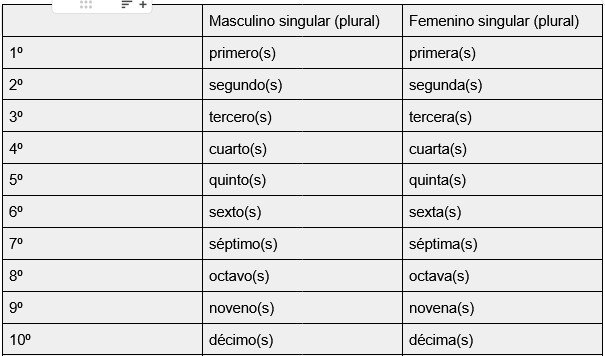
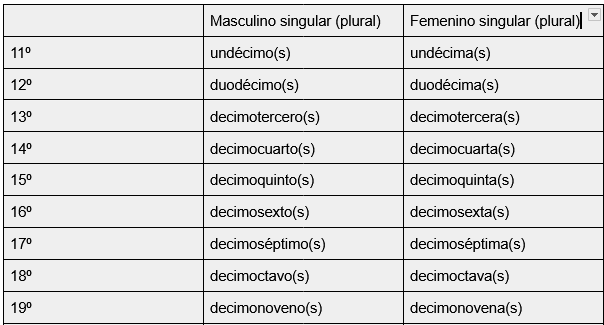
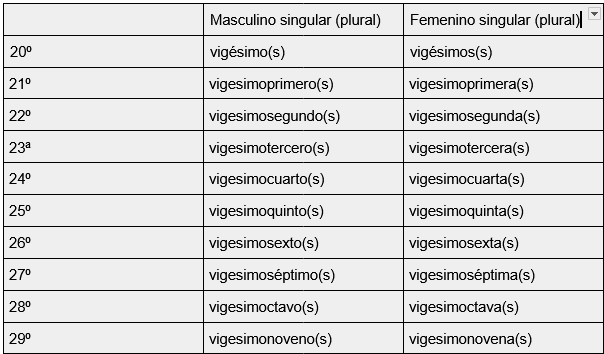
I have decided to divide them this way because the recommendation of the RAE is that these tens should be written as a single word. From 30º onward, as we will see, writing them as two words is more common, although writing them as a single word is also accepted. Let’s look at some exceptions for these tens and examples of usage.
For 11º and 12º, in addition to undécimo and duodécimo, the forms decimoprimero and decimosegundo are also accepted.
The forms primero and tercero are shortened to primer and tercer when they precede the noun, but they remain unchanged when they come after it. This rule applies to all tens; for example, the same happens with vigesimoprimero and vigesimotercero. This is important because ordinal numbers usually precede the noun.
He visto el primer capítulo de la serie. I have watched the first episode of the series.
*He visto el primero capítulo de la serie (agrammatical).
He visto el capítulo primero de la serie. (Rarely used).
As we mentioned earlier, in spoken language, ordinal numbers are usually used up to 10º, and beyond this, cardinal numbers are generally used instead.
– ¿A qué piso vas? (What floor are you going to?)
– Al sexto, ¿y tú? (To the sixth, and you?)
– Al once. (Literally, to the eleven, correctly translated to the eleventh).
They are commonly used as adjectives to describe nouns that follow an order, such as in the case of events and anniversaries (hoy es nuestro segundo aniversario de bodas, today is our second wedding anniversary), repetitive actions (es la tercera vez que te pido que saques la basura), capítulos, episodios, temporadas, etc., (el sexto episodio de la serie es el mejor, the sixth episode of the series is the best, segundas partes nunca fueron buenas, sequels were never good), possessions we tend to change over time (mi primer auto fue un Renault, my first car was a Renault), resultados deportivos (el equipo quedó tercero al final de la temporada, the team finished third at the end of the season), etc.
In the case of primero, it can function as an adverb:
– ¡Quiero helado! (I want ice cream!)
– Primero termina tu comida. (First, finish your food).
They are also used to designate centuries and certain titles. In these cases, Roman numerals are typically used:Constantino III se autoproclamó emperador romano de Occidente en el siglo V. (Constantine III self-proclaimed himself Roman Emperor of the West in the 5th century).
Now let’s look at the rest of the tens, hundreds, etc. From the 30º onward, as mentioned earlier, the recommendation is to write them separately and with the respective accent marks (trigésimo primero, 31º), although for tens writing them as one word is accepted, in which case the accent marks are dropped from the tens since the phonological accent is placed on the second word (trigesimoprimero, 31º, trigesimoséptimo, 37º). Ordinal numbers written as a single word only show variation in grammatical gender and number in the second component: vigesimoprimera, vigesimoprimeros, vigesimoprimeras. When written as two words, both components vary in gender and number: trigésima primera, trigésimos primeros, trigésimas primeras. From the 100º onward, they are written with separate words, simply juxtaposing the ordinal numbers from highest to lowest (centésimo cuadragésimo quinto, 145º), although starting from the hundreds, they are so rarely used that if you ask a native speaker what the ordinal of a number like 245 is, they are likely to not know.
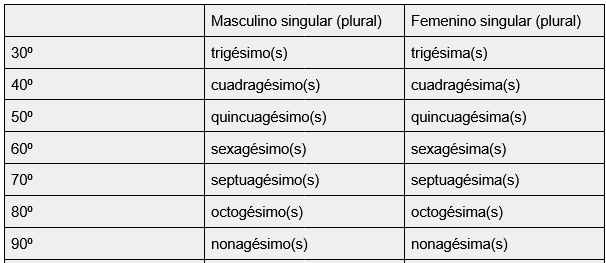
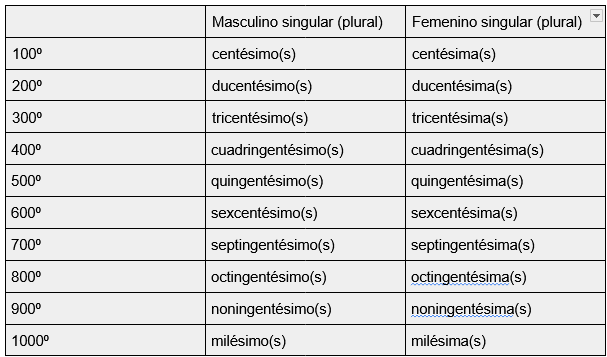
Of course, there are ordinals beyond the 1000º, but I haven’t included them because, on one hand, I felt it was excessive to include them up to the 1000º, and on the other hand, I thought it would add more information to an already content-heavy article, which would also be of very little use since those ordinals are hardly ever used. The most frequent use of these we’ve seen is, for example, for the promotion in the press or on television of events that have many editions: En 2025 se celebra la vigesimonovena edición de la Fiesta de la Vendimia en Mendoza. (In 2025, the twenty-ninth edition of the Grape Harvest Festival will be celebrated in Mendoza).
We have reached the end of this chapter. I know I have included a lot of information, but the truly important points in this article are mastering the agreement in gender and number of the ordinals with the adjective and, for spoken language, the first ten. Here are exercises to practice this topic, and if you have any questions, feel free to write to me. Thanks for reading!






Leave a Reply